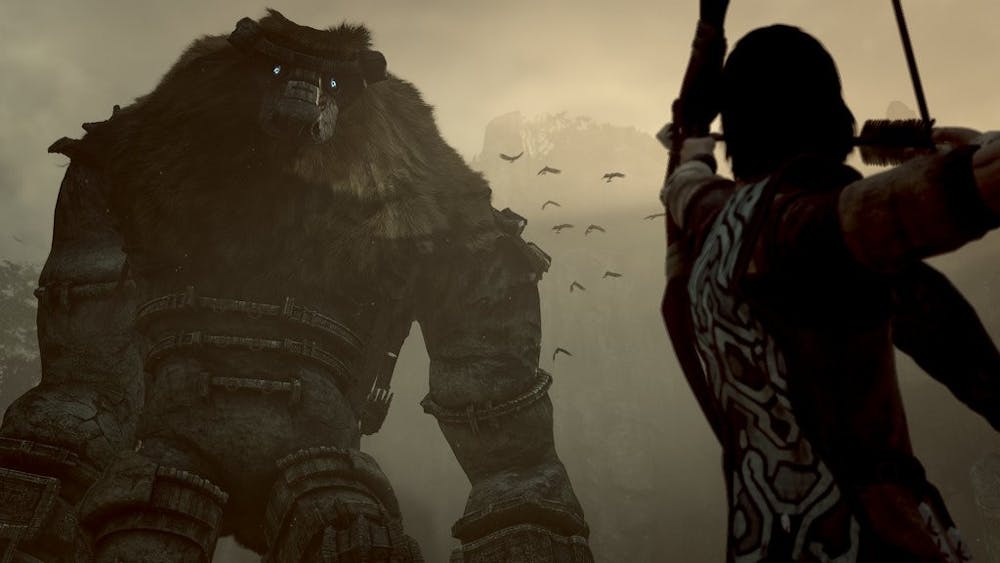*Minor spoilers for Shadow of the Colossus ahead*
Shadow of the Colossus allows players to fill in gaps within its own world. Rather than overexplain its own story, the action-adventure game instead leaves potential for endless discussion and a personal experience still worth coming back to almost two decades later.
Originally released in 2005 for the PlayStation 2, Shadow of the Colossus is an action-adventure game directed by Fumito Ueda, who is also known for directing Ico and The Last Guardian. While Ueda’s works are often praised and discussed, Shadow of the Colossus particularly stands out for many fans.
Shadow of the Colossus uses minimalist storytelling to tell the thought-provoking narrative of Wander, a young traveler who arrives in the abandoned Forbidden Lands to conduct a ritual to bring a girl, Mono, back to life. Wander makes a deal with a mysterious bodyless entity called Dormin to kill 16 colossi that roam the lands to bring Mono back to life.
The game’s story is presented with few cutscenes, little dialogue and even less exposition explaining the world and characters. Before, during and after Wander slays numerous giants to reach his end goal, Shadow of the Colossus allows players to do their own worldbuilding.
There are plenty of unconfirmed mysteries in the Forbidden Lands and beyond that will get players theorizing. Why was Mono “sacrificed” because of her “cursed fate,” as Wander describes it? Who is Dormin, where do his powers come from and why is his ritual forbidden? What were these now-lifeless lands like when human beings presumably inhabited them? Even after the credits roll, the player will get few confirmations. However, that’s an appeal of Shadow of the Colossus. The game gives heavy implications of just a synopsis of an explanation, but no specific details are told.
Many agree Shadow of the Colossus effectively tells a tragedy of desperation and sacrifice. Its themes that come with its narrative alone make for a worthwhile experience, but the game’s silent lore is what completes it. On a surface level, the Forbidden Lands are barren outside of major locations where boss battles take place. However, Shadow of the Colossus’s world is not a lifeless void. It’s a blank canvas that lets the player use their imagination to fill in the lore of whatever they find.
It’s not hard to find dedicated fans post their own theories online on what each tiny detail means throughout the environment. The game gives players a desire of exploration even after every nook and cranny has been researched. That urge is why fans theorize over the existence of a secret 17th colossus, an alternate ending and connections to Ueda’s other works. Sure, there might not be much material evidence for some of these theories, but looking through the game’s promotional items, previous builds, creator interviews and other potential pieces of evidence is almost as much fun as exploring a fictional world itself.
When it comes to its gameplay, soundtrack, aesthetic and base narrative, there’s not much to say about Shadow of the Colossus that hasn’t already been spoken. However, with a world and story that leaves room for interpretation, the game still delivers a worthwhile experience 17 years later.
Melody Feazell is a senior studying strategic communication at Ohio University. Please note that the views and opinions of the columnists do not reflect those of The Post. What are your thoughts? Tell Melody by tweeting them @MelodyFeaz.





